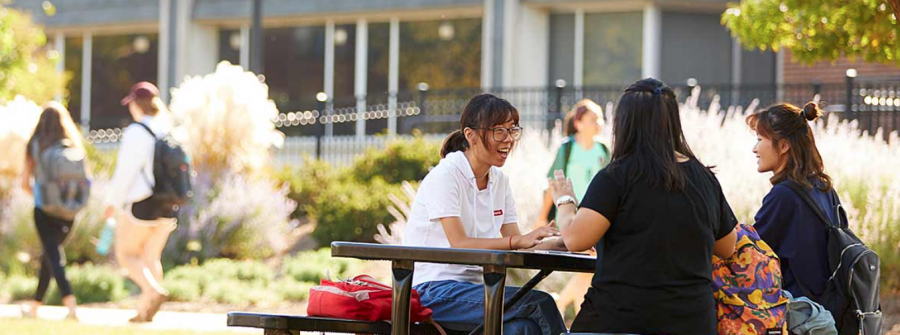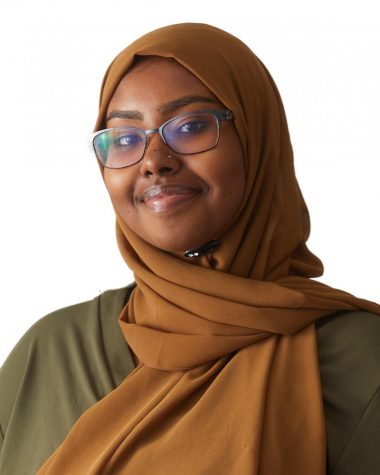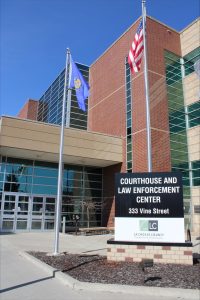The 90 percent – UWL is among the least racially diverse universities in the region
October 17, 2019
While the University of Wisconsin-La Crosse showcases its racial inclusivity through images of black and brown faces on the UWL homepage, the conversation that UWL is a predominantly white institution (PWI) is under-discussed. Being a PWI doesn’t begin with examining the 10 percent of students of color at UWL, but rather the approximately 90 percent of students that identify as white on campus.
According to U.S. News and World Report, UWL had a 0.19 diverse index in the fall of 2018—this value being within the ranges of zero to one alongside all regional Midwest universities. To better understand this index, it should be noted that the closer the university is to one, the more racially diverse it is. Thus, having an index of 0.19 makes UWL one of the least racially diverse universities in the region.
In addition to this, the undergraduate retention rate of students of color in the fall of 2017 was 79 percent—a percentage that appears high but is the lowest retention rate in comparison to all other demographics on campus (femme students, first-generation students, pell grant students, etc.).
The cause of the lower retention rate amongst students of color stems from the historical hate crimes, speech, and microaggressions students have faced and continue to deal with today; racial issues that The Racquet Press had reported on last spring. When also looking at the overview of hate/bias incidents, the second-highest reported incidents dealt with race and ethnicity.
“I think when you talk about the 90 percent it’s the default—it’s what’s not extra. Anything besides that is different, extra, or unique,” said UWL alumna and Pre-College Coordinator in the Office of Multicultural Student Services, Authrene Ashton.
Tokenism is, “the practice of doing something (such as hiring a person who belongs to a minority group) only to prevent criticism and give the appearance that people are being treated unfairly,” according to Vanderbilt University. Whether it is an image of students of color on the UWL homepage or being one of the few students of color in their major or program, the 10 percent of students at UWL is displayed through visuals and examples to outsiders.
“In addition to this, when students of color are tokenized, they take on this role of being educators to their peers. This results in many students going through racial battle fatigue, or the psychological stress students of color go through at historically white campuses,” according to The University of Utah.
“Being the only person of color in my cohort and many of my education classes, I experience racial battle fatigue all the time,” said UWL senior Mirm Hurula, “I’m always trying to educate my fellow peers because my professors aren’t educated enough in racial justice and identities in general.”
Multicultural student organizations plan major events such as Black Student Unity’s Reflection of Ebony and Latin American Student Organization’s Fiesta. These programs are done by students of color and primarily for students of color.
“When you say look at our campus, who is that? When you say look at what our campus is doing, who is that campus? It’s not the campus putting on the events, it’s not the campus that are speaking on these panels,” said Ashton.
When looking at solutions, there are many things PWI’s can do to educate themselves.
“Get uncomfortable and then do the work. You can’t know what you don’t know, but you have to know where you’re at to know where to start,” said Ashton. “With a school email address, you have access to so many resources. Websites, libraries, listservs, and even the Murphy Library here. There’s Netflix now with so many documentaries. There’s so much access to knowledge when you’re a college student.”
In the 2016 documentary film “Inclusive Negligence”, students expressed their thoughts on what educators at UWL can do better when it comes to helping students of color in and outside of the classroom. The documentary was released three years ago and many of the issues, feelings, and statistics—such as UWL being 90 percent white—are still the same and can be applied to UWL.
In the film, Bedston Burrell said, “We’re looking to the teachers and the faculty and the administration. We’re looking to you to actually make the changes. We are here and we’re making the effort, we’re putting that first foot forward. It’s up to the people with the power to actually say something. And that’s something we don’t see a lot of.”
Get involved with Students Educating & Embracing Diversity (SEEDs) by requesting a training for your members or residents, attend the Hate/Bias Response Symposium to discuss prevention and ask faculty trained in racial justice education and diversity inclusion questions, such as Authrene Ashton, in OMSS and Campus Climate, located in 1120 Centennial Hall.







